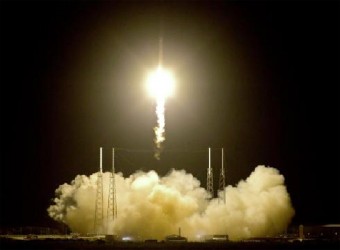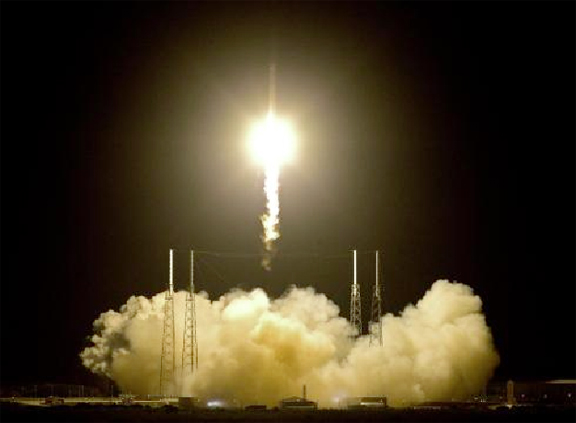CAPE CANAVERAL, Fla., (Reuters) – An unmanned Falcon 9 rocket developed by Space Exploration Technologies, or SpaceX, blasted off yesterday to put its first commercial satellite into orbit, staking a potentially game-changing claim in a global industry worth nearly $190 billion a year.
The 22-story rocket lifted off from its seaside launch pad at Cape Canaveral Air Force Station in Florida at 5:41 p.m. EST/2241 GMT.
 Two previous launch attempts last week were scuttled by technical glitches, including a last-second abort on Thursday. Engineers later discovered oxygen inside the rocket’s ground-based engine igniter system. Perched on top of the rocket was a 7,000-pound (3,175 kg) communications satellite owned by Luxembourg-based SES S.A. , which operates a 54-satellite fleet, the world’s second-largest.
Two previous launch attempts last week were scuttled by technical glitches, including a last-second abort on Thursday. Engineers later discovered oxygen inside the rocket’s ground-based engine igniter system. Perched on top of the rocket was a 7,000-pound (3,175 kg) communications satellite owned by Luxembourg-based SES S.A. , which operates a 54-satellite fleet, the world’s second-largest.
“I’d like to thank SES for taking a chance on SpaceX,” company founder and chief executive Elon Musk posted on Twitter an hour before the launch. “We’ve given it our all.”
About 30 minutes after liftoff, the satellite, known as SES-8 and worth more than $100 million, was in an elliptical orbit that reached more than 50,000 miles (80,000 km) from Earth, about a quarter of the way to the moon.
From there, SES-8 will maneuver itself down to a circular, 22,369-mile (36,000-km) high orbit to provide television, broadband and other communications services to customers in India, China, Vietnam and elsewhere in Asia.









